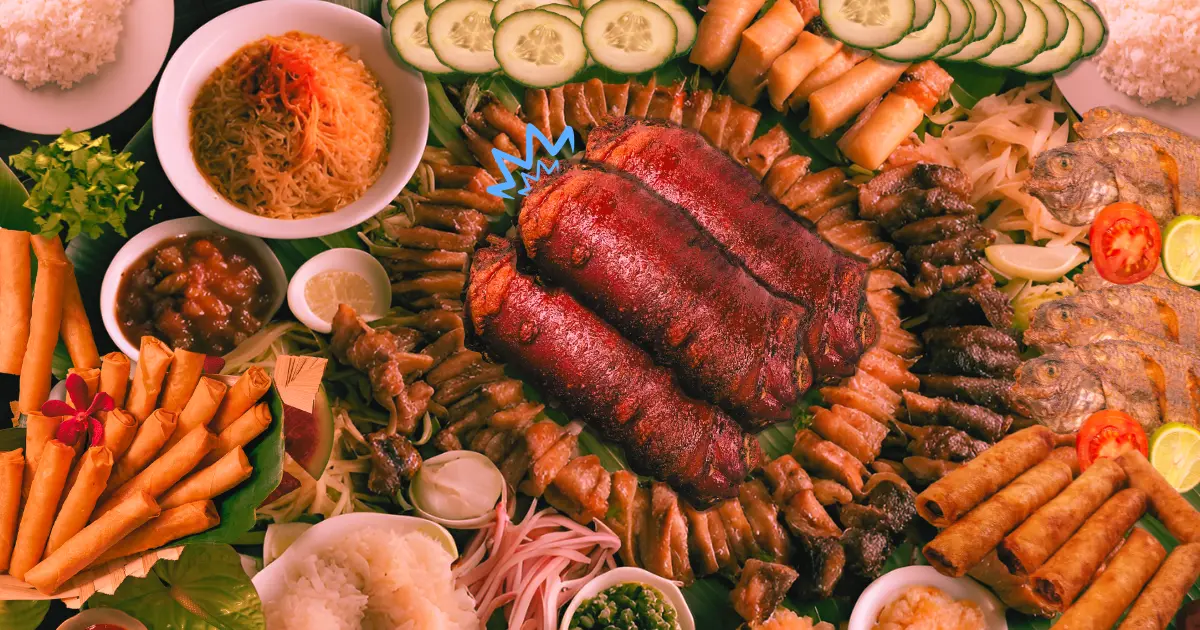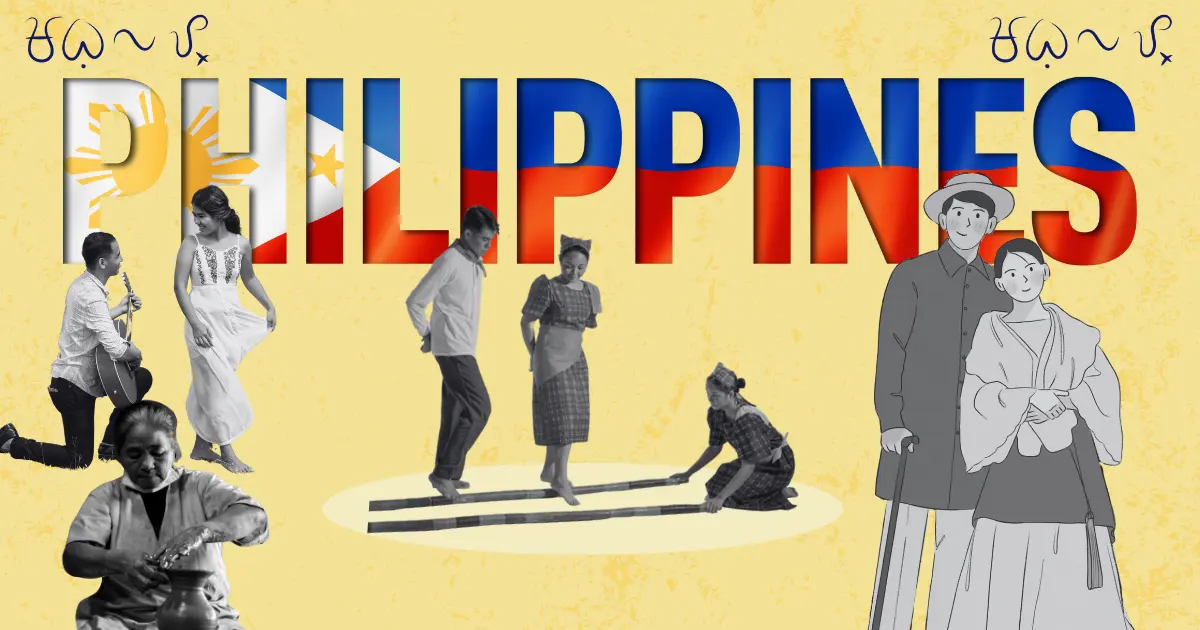Whether we realize it or not, the first thing any of us experience upon visiting a new country is its culture.
From the moment you arrive, your senses pick up on everything that makes that country unique. Stepping foot inside the Philippines is no different. Due to its colorful history, the Philippines' culture is an eclectic blend of eastern and western influences, making it an ideal location to visit.
Those who possess a keen interest in anything and everything involving Philippine culture have come to the right place. Scroll down and prepare to delight in all the cultural facts detailed in this very page!
How the Culture Came to Be
If there's one word that best describes Filipino culture, it would be diverse. What locals and tourists alike see, hear, touch, and experience on a daily basis is the result of colonization, occupation, and overall exposure to Spanish, American, Chinese, and Malay cultures.
In terms of sheer volume, Spain's influence may just be the most notable. This isn't surprising, given their 333-year-rule over the Philippines, from 1565 to 1898. It is this influence that often makes Filipino culture feel more Latin than Asian, at least compared to its neighboring countries.
With over three centuries of Spanish control under the Philippines' history, almost everything under the sun has a touch of Spanish culture as well-from the country's dominant religion, to the language, to the customs practiced, and more. The western influence doesn't end with Spain, however.
After the Spanish came the Americans. With the Philippines under American control from 1898 to 1946, the Americanization of the culture remains strong to this day. Just as the country feels more Latin than Asian, the Philippines also has no rival in Southeast Asia when it comes to their level of westernization.
Turning our attention to eastern influences, the bulk of the culture in the Philippines came from the Malays. Not even centuries of western occupation was enough to eradicate it. Long-time exposure to Chinese traders also managed to leave a cultural mark on the Philippines, as did Japan's brief occupation of the country during World War II.
How Family Plays a Vital Role in the Culture

Family is the most basic and important part of Filipino culture, for everything starts at home.
Turning our attention away from history, the best way to understand the depth of the Philippines' culture is to know that above almost everything else, family comes first. It is often considered the basic and most important aspect of Filipino culture, and that is a statement that few Filipinos would ever dispute.
Some of the other significant aspects of the culture get their start at home, after all. Children learn the languages they speak through family; the distinctly Filipino meals they learn to love are first served at home; even the most minor customs and beliefs are introduced and encouraged inside one's household.
A Brief Look at the Filipino Language
According to FutureLearn, the Philippines presently has around 183 live languages, making the country among the most linguistically diverse in the world. While the national languages of English and Filipino are formally taught in schools, the regional and indigenous ones are first learned at home through exposure.
Two of the most common regional languages are Tagalog and Cebuano. Both are spoken by roughly half of the country's overall population. In fact, the former is the basis of the standardized and aforementioned "Filipino language."
Immigrant languages are also taught, depending on the household. For example, Filipino muslims may learn Arabic. Some Islamic schools in Mindanao also teach its modern standard variant as part of their curriculum. Mandarin and Japanese are other languages learned by mixed-race Filipinos, either at home or in school.
English, by far the most popular and common foreign language, even comes with its own local variants, such as Taglish (a mixture of Tagalog and English). Due to the past long-standing Spanish colonization, several Spanish words are also commonplace in Filipino speech.
A Taste of Filipino Cuisine

Food culture in the Philippines varies tremendously, but we can all agree it looks and tastes great.
If the F in Filipino could stand for family, a close word association would be food. Given how close families tend to be in the Philippines, the sharing of food plays an important role in creating that sense of togetherness.
Like various other cultural aspects, there are many external influences in Philippine cuisine. Discerning tongues will identify the Spanish, American, Chinese, and Malay influences in any given dish. However, there's more to the cuisine than just the flavors one can taste.
Food culture in the Philippines can also be quite unique in their individual presentation. The street food, for example, is simply oozing with character. Traveling to cebu and partaking in the famous cebuano street food can mean sampling the savory sensations of kwek kwek, ginabot, and tuslob buwa, among others.
For more examples of famous Philippine dishes, take a gander at the following:
Lechon
This is among the Philippines' most cherished dishes: a roasted pig with different variants popping up in different regions of the country. For example, a lechon variant in Luzon sees the pig roasted together with salt and pepper before having the meat dipped into a sauce that comprises onions, garlic, and pig liver, among others.
Adobo
This Spanish-inspired dish has main ingredients such as fish sauce, vinegar, and soy sauce. It is cooked using either pork or chicken, and even vegetables such as green beans (called sitaw) or water spinach (called kangkong).
Sinigang
This is the classic Filipino soup that many call the country's unofficial national dish. It has a distinct sour and savory flavor and is either served by itself or alongside steamed rice. This is among the Philippines' oldest dishes, having existed before any outside influence penetrated the country.
Lumpia
This simple dish is often served as a side dish alongside other food. It is Chinese-inspired, evolving from spring rolls. Lumpia is made by taking a flour dough wrap and stuffing it with meat and vegetables, specifically ground pork, beef, cabbage, garlic, onions, and carrots.
Pancit
Yet another Chinese contribution to Philippine culture is pancit. This particular dish was actually brought over to the country by immigrants and traders. Since then, the locals have fully adopted it as part of the cuisine. Most variants of it use calamansi for seasoning.
Filipino Religious Practices
Perhaps the biggest cultural contribution provided by the Spanish was the introduction of Roman Catholicism to the Philippines. Being Catholic lies at the heart of the Filipino identity, at least for most of the population.
There are also strong sections of the population that belong to other Christian denominations and even other religions. Islam has more than a solid presence in the country, for example. Other popular religious affiliations that happen to be non-Catholic include Iglesia ni Cristo and Seventh Day Adventist.
Religious practices are often encouraged within the household. Families pray and worship together, though that does not prevent individuals from straying or converting on their own. Religious holidays and festivals are also important aspects of Filipino culture that are observed and celebrated by families.
Filipinos often have their own unique ways of celebrating Christmas, for example. Specific places in the country, such as Cebu, are also famous for their unique religious festivals. The best example of this would be Sinulog, celebrated on the 3rd Sunday of January.
What About Local Filipino Beliefs and Superstitions?
Despite the grip that major religions like Catholicism and Islam have on the Philippines, the grip that their other beliefs and superstitions have seem just as strong. Though contradictory and old-fashioned, these beliefs are nonetheless as much a part of Philippine culture as anything else.
Here are notable examples of the Philippines beliefs and traditions:
-
Saying "tabi-tabi, po" out loud, due to the belief that the person saying it is passing through spirit dwelling places. It is meant to be a sign of respect and to avoid the wrath of the supposed-spirits living in the area.
-
Knocking on wood in order to counter any negative remark.
-
Not going home right away after leaving a wake, out of fear that the soul of the recently deceased might follow them home. The person heading home is advised to make a stop somewhere first instead.
Discovering Filipino Art, Music, and Fashion

Whether it's the tinikling or the cultural dress of the Philippines, there's no denying the versatility of Philippine art.
No culture would be complete without art. The Philippines distinguishes its art into two branches: traditional and non-traditional. The former includes weaving, carving, pottery, folk dances, folk songs, calligraphy, painting, and even tattooing. The country has had a deep history of engaging in all of these long before any colonizers came.
On the other hand, non-traditional art refers to present-day practices. Modern versions of dance, song, and theater (complete with foreign influence) fall under this branch. Then, there are the visual arts like photography and graphic arts. Falling on the more technologically advanced side of things are film, animation, and the like.
Filipino Music
As mentioned above, Filipinos have had a long history of traditional, indigenous folk music. Developed from the country's various regions and played using a wide array of instruments, notable folk songs include "Sa Ugoy ng Duyan" and "Paalam Na Guro."
More modern Filipino music comes in the form of the OPM (Original Pinoy Music / Original Pilipino Music) genre. That term was first coined by the late singer, composer, and actor, Danny Javier. It originally referred to pop songs, but eventually expanded over the decades to include popular songs of any genre that are recorded and performed by Filipinos.
Filipino Fashion
Like other sub-categories of art, there are traditional and non-traditional aspects to Philippine fashion. For example, different ethnic groups have always had their own specific fashion for everyday use and for formal or special occasions.
Examples would be Igorot ethnic outfits and the Baro't Saya. In the Visayas region, there is the kimona and the Patadyong. In more urban areas of the country, traditional clothing includes the Maria Clara Dress (perhaps the cultural dress of the Philippines) for the women and the Barong Tagalog for the men.
The evolution of Philippine fashion was also influenced by the coming and goings of foreign colonizers and occupiers. As such, the Spanish and American influence of Filipino clothing have always been apparent from the past up until the present day.
The Filipino Dating Culture

Serenading the woman you intend to spend your life with is a major part of Philippine culture and tradition.
The traditionally conservative Filipino society, coupled with modern influences, makes the country's dating culture rather unique. On one hand, there is the traditional courtship called ligaw. This long and arduous process sees the men pursue the women they are interested in through a series of gestures.
Such gestures include the writing of love letters, sending flowers, and going on actual dates. It is during ligaw that the practice of harana, or serenading one's love interest, takes place. Though definitely old fashioned, ligaw remains a sign of both respect and commitment and is still practiced by many Filipinos to this day.
Even the most modern Filipina women will have gestures like this on the back of their minds when entertaining potential lovers. Though Filipinos are just as likely to hop on the online dating bandwagon as anyone else, taking time to date slowly and with intent remains a cherished part of the culture all in all.
Other Diverse and Unique Philippine Customs and Traditions
Turning away from the broader aspects of Filipino culture examples, let us turn our attention to the more nuanced parts: the customs and traditions. The versatility of Philippine culture and tradition allows for a wide variety of practices, often melding the old and the new. Here are a few examples that are bound to interest you:
The Bayanihan Spirit
This is a custom that places great emphasis on helpfulness and cooperation. Filipinos derive it from the word bayani, which means hero. Putting the bayanihan spirit to practice has traditionally meant physically moving houses in rural areas, but it can also apply to any collective effort in our modern world.
Showing of Respect for Elders
With such a strong love of family, it makes sense that Filipino customs also revolve around showing their love and respect for their elderly. One of the most common practices that show this is the pagmamano , which is when a much younger person takes the hand of someone older and presses the back of the hand against their forehead.
The Boodle Fights
One of the more modern customs, it is related to an older practice called kamayan, where meals are served on top of banana leaves and eaten with the bare hands. Today, boodle fights (not literal fights) closely resemble that, not just outwardly but also in spirit.
Setting Up Home Altars
The religious nature of Filipinos makes the setting up of home altars common in many households. Visitors should not be surprised to enter a house and find a small section devoted entirely to an altar, complete with religious decorations that range from minimalist to outright extravagant.
Given the fact that the Philippines possesses a high-context culture, just like the majority of Asian countries, having a solid grasp of the customs is often necessary. Learn how to behave in the Philippines and your time spent there will be far more enjoyable.
As you can see, there is so much ground to cover when it comes to the rich and vibrant Philippine culture. Whether it is the intricacies of Filipino customs and culture, their beliefs, their cultural dresses, their food, or any other interesting aspect, there's clearly a lot to learn and love.
While reading a single article won't come close to actually experiencing it, the cultural facts about the Philippines it provides is often alluring enough to deepen one's curiosity.
So, once you're ready, be sure to dive in and accept the culture of the Philippines with an open mind and an open heart!
References
California State University. “Culture and Tourism”
https://www.csub.edu/pacificrim/countryprospectus/culture.htm
FutureLearn. 2022. “What languages are spoken in the Philippines?”
https://www.futurelearn.com/info/futurelearn-international/what-languages-are-spoken-in-the-philippines
Kueh, Joshua. 2021. “Negotiating Empire, Part II: Translation in the Philippines under Spanish Rule, 16th-19th centuries.”
https://blogs.loc.gov/international-collections/2021/11/negotiating-empire-part-ii-translation-in-the-philippines-under-spanish-rule-16th-19th-centuries


























